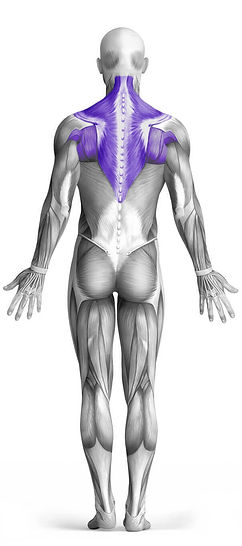Reverse Grip Bent Over Row 101 Video Tutorial
0

Timer
Hour
Minute
Second
Stopwatch
00:00:00:00
Overview
The Reverse Grip Bent Over Row is an effective exercise that primarily targets the upper back, with secondary emphasis on the biceps, lats, and shoulders. This movement is performed by holding a barbell with an underhand (supine) grip, bending at the hips to lower the torso, and then pulling the barbell toward the lower chest. By utilizing the reverse grip, the exercise places more focus on the upper back and biceps while still engaging the lats and shoulders for a well-rounded back development. This exercise requires a barbell and is commonly used to build strength and muscle mass in the upper back and arms.
How to Perform
Start by setting a barbell in front of you and load it with an appropriate weight.
Stand with your feet about shoulder-width apart, keeping your knees slightly bent.
Squat down and grip the bar with an underhand (reverse) grip, ensuring your hands are wider than shoulder-width and your thumbs are positioned on top of the bar.
Keeping your back straight and core engaged, stand up to lift the bar, bringing it to your waist.
To initiate the movement, hinge at the hips and bend your knees slightly, allowing the bar to slide down your thighs. Lower the bar until it is just below knee level, maintaining a strong, neutral posture.
From this bent-over position, pull the barbell towards your lower chest, focusing on squeezing your shoulder blades together as you lift.
At the top of the movement, pause for a moment to fully engage the muscles of your upper back.
Slowly and with control, lower the barbell back to the starting position, keeping your back straight throughout the descent.
Repeat the movement for the desired number of repetitions, ensuring that your form remains consistent and controlled.
★ Bonus: For exercises that involve external weights (such as dumbbells, barbells, or machines), the One Rep Max (1RM) calculator can help you estimate your maximum lifting capacity. Use it to track your strength progress and adjust your training for optimal results.
Tips
At the top of the movement, pause for a moment and focus on squeezing your shoulder blades together to maximize muscle engagement in your upper back.
When lowering the barbell, do so in a slow and controlled manner to maintain tension in the targeted muscles.
Throughout the exercise, ensure your back remains straight to avoid strain and maintain proper posture.
Keep your head aligned with your spine and your eyes looking straight ahead during the entire movement to prevent neck strain.
To avoid back injuries, prioritize perfecting your form before adding heavy weight, ensuring a safe and effective workout.
How Not to Perform
Avoid Rounding Your Back
Never round your lower back during the movement. Keep your back straight and maintain a neutral spine to avoid placing unnecessary stress on your lower back and to reduce the risk of injury.
Don't Use Momentum to Lift the Weight
Do not jerk or swing the barbell to lift it. The movement should be controlled and deliberate, focusing on the target muscles (upper back and biceps) rather than relying on momentum, which can waste energy and increase the risk of injury.
Don't Let Your Knees Collapse Inward
Ensure your knees remain aligned with your feet throughout the movement. Avoid letting them cave inwards, as this can cause strain on your lower body and affect your balance.
Avoid Looking Up
Don’t tilt your head backward or look upward. Keep your neck neutral and aligned with your spine. Looking up can cause neck strain and throw off your posture, making it harder to maintain control during the exercise.
Don’t Use Too Much Weight Too Soon
Avoid lifting a weight that is too heavy for you. Lifting too much can compromise your form, leading to poor muscle engagement and a higher risk of injury. Start with a manageable weight and progressively increase it as your form improves.
Don't Drop the Bar Too Quickly
Resist the urge to let the bar fall quickly after reaching the top of the movement. Lower the bar slowly and with control to maintain constant tension on the target muscles (upper back and biceps), maximizing muscle activation and reducing the risk of injury.
Don't Overextend the Elbows
Avoid fully extending your elbows at the top of the movement. Instead, keep a slight bend in your arms to maintain constant tension on the muscles and prevent strain on your elbow joints.
Don't Hunch Your Shoulders
Ensure that your shoulders stay pulled back and down, rather than hunched forward. Focusing on keeping your shoulder blades squeezed together throughout the movement will target your upper back more effectively and prevent unnecessary stress on the shoulder joints.
Variations
Variations of fitness exercises refer to different ways of performing a specific exercise or movement to target various muscle groups, intensities, or goals. These variations aim to challenge the body differently, prevent plateaus, and cater to individuals with varying fitness levels.
Alternatives
Alternative exercises in fitness refer to different movements or activities that target similar muscle groups or serve the same training purpose as the primary exercise. These alternative exercises can be used as substitutes when the original exercise is unavailable or challenging to perform due to various reasons such as equipment limitations, injuries, or personal preferences.








